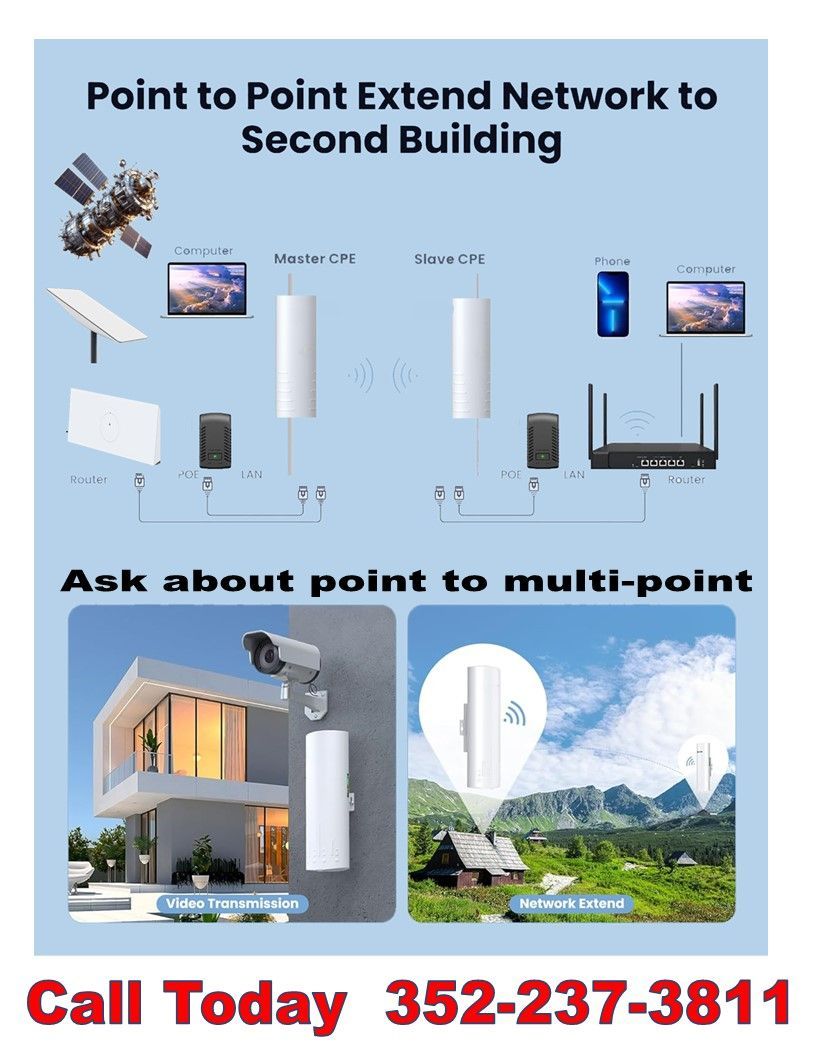International Satellite & Antenna now installing
Point-to-Point Networks and Wi-Fi Access Points

You can share your internet with buildings up to 1.3 miles away!
Great for Farms!
A point-to-point Wi-Fi system is a wireless communication setup that establishes a direct link between two specific points or locations. This type of system is commonly used to connect two buildings or locations where running physical cables (such as fiber optic or Ethernet) is impractical or cost-prohibitive. Here's how it generally works:
Equipment: You typically need two sets of compatible wireless transceivers (often called radios or antennas). Each set includes a transmitter and a receiver designed to communicate with each other.
Installation: The transceivers are installed at each of the two locations you want to connect. They are usually mounted on high points like rooftops or towers to ensure clear line-of-sight between them.
Line-of-Sight: One critical requirement for point-to-point Wi-Fi is an unobstructed line-of-sight between the two antennas. This means there should be no physical obstacles (like buildings or trees) blocking the path, as these can degrade or disrupt the signal.
Configuration: Once installed, the transceivers are configured to establish a wireless link. This involves setting the operating frequency, channel width, and other parameters to optimize performance and avoid interference.
Data Transmission: Once the link is established, data can be transmitted between the two points at high speeds, depending on the capabilities of the equipment used. Point-to-point Wi-Fi systems can achieve throughput comparable to wired connections in many cases.
Advantages:
Cost-effective: Compared to laying cables, point-to-point Wi-Fi can be more economical.
Flexibility: It's easier to set up and modify compared to physical connections.
Rapid Deployment: Ideal for temporary or urgent connectivity needs.
Considerations:
Line-of-Sight: This is crucial; any obstructions can degrade performance or even prevent connectivity.
Interference: Other wireless devices operating on the same frequencies can interfere with the signal.
Security: Encryption and security protocols must be employed to protect data transmitted over the wireless link.
Overall, point-to-point Wi-Fi systems are a practical solution for extending network connectivity between two locations without the need for physical cables, offering flexibility and cost-efficiency in various scenarios.
For additional information on Point to point call John at 352-237-3811
